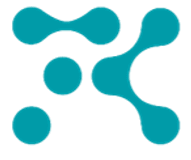“2013 brought more warning signs, the sense of urgency had never left us. More clouds of change in customers in the market, in the environment … Five consecutive years of crisis made companies and individuals think about what it is we do and why.
Allegro 234 always saw the future as a place where the possibilities of configuration and design are free, not as a finite point or predictable destination. So, at that time our choice was to spend time between projects, preparing for the future.”
We asked questions to understand:
- What kind of world do we live in? What trends affect us?
- How do we build value through our company management?
- How can we adjust the business idea to the trends and outlook for the sector and to potential new audiences?
- What will the new Allegro 234 customer experience include?
And to answer ourselves, we investigate and dialogue with multiple sources: clients, employees, associations, consultants, academics, personal contacts in Linkedin, audiovisual literature. In each of them we found inspiration, provocation and guidance to act, think, learn and act again.
The main consequence of the refocusing of our strategy was to recreate the Allegro 234 brand as the axis of the relationship between the company and people. Thus it fulfills two roles: It is the platform that synthesizes our highest-level strategy and supports the lifestyle of those with whom we establish links.
Making sense of the trends
According to Fabrizio Ferraro and Bruno Cassiman, professors from IESE Business School, there are three trends that will change the way we manage:
- Globalization: The intensification of social and economic transactions across geographical borders. It opens up a unique opportunity to rethink operations.
- Digitization: Technological change comes in many forms. How does it affect products, business models and communities?
- Politicization of the corporate world: Companies are accepting social responsibilities, responding to the market and to the “non-market”. This implies new CEO roles such as arbitrageurs, experimenters and orchestrators of hybrid organizations
And more questions arose:
How do you implement the current strategy whilst you develop tomorrow´s? How do you to develop a multifaceted identity that embraces both concepts? Which is the essence you will maintain, what do you have to leave and what to adapt to ‘continue participating’?
The new scenarios require:
- INTERDEPENDENCE – In a world defined by networks and connections we have to recognize the growing interdependence among players: We need insights, collective knowledge, resources and capacities of all.
- AMBIDEXTROUS LEADERS – Organizations should explore new opportunities to keep the business model relevant while working with operational rigour to obtain the maximum performance from regular activities (exploit): Adaptability and effectiveness in parallel. (Michael Tushman, 2004 – Harvard Business School professor)
- EXPERIMENTATION – As life cycles are getting faster and shorter, response times are shortened. More prototypes, proximity, flexibility, knowledge, are needed to give concrete form to an idea to experiment, learn and get feedback … We participate in massive and interactive learning processes
- LONG-TERM RELATIONSHIPS – Develop strategic alliances with experts which complement us from their disciplines in order to move together and faster. To become a partner, you need things in common that enable dialogue and different elements to add value.
- REPUTATION – A paramount in a trust-based business. Recognise intangibles as important assets in the decision making processes
Allegro 234 creates value for its clients, exploring together. We help them keep their business model relevant transforming the brand, from concept, design and staging, in a strategic platform.
Learning from history
We wanted to listen carefully to our key audiences. We wanted to know what differentiated us from other branding consultancy companies. The famous question: “Why us?” had one answer that in the words of our clients can be summarized as follows: “They think differently and that is what makes them different. They seem to be ahead of change. They are authentic, they are attentive to clients´ needs, detail-obsessed, they think and do simultaneously, they also anticipate you…. “” …Although they have to explain what they do in an easier way.”
While trying to rationally explain the “different way of thinking” we find an article written by Tracey Keys that summarizes it with eight principles:
- Embrace ambiguity: Don’t just think outside the box, throw away the boxes. These boxes no longer reflect the realities of cross-boundary competition in an increasingly interconnected world. Embrace the opportunities of the growing interdependence between industries, countries, companies, organisations and functions.
- Think first from the outside-in, then inside-out. Use the other’s perspective first and challenge your value proposition through the eyes of your external audience (clients, customers, stakeholders, etc.).
- Identify and address root causes, not symptoms. Investigate why past formulas do not prepare your organization for future opportunities
- Practise two-directional thinking (both, at the same time)
- The first direction is thinking from where you are in the present towards where you want to be in the future, identifying what can be achieved with the business as it is. (accelerate on-going initiatives)
- The second direction means having a point of view on the future and defining the organisation’s ambition for success, irrespective of its position today. From there executives must look backwards towards the present to identify the fundamental steps to achieve the stated ambition
- Manage relationships/networks versus transactions. When business is about connections, how those connections are made and maintained matters
- Focus on co-creation. Companies also need to recognise that consumers and customers are not just interested in buying products but in co-creating the overall experience – and have the awareness, interest and ability to do so. Involve them in innovation and customer experience design and even in reshaping business models
- Align purpose and profit. While operational rigour and delivering results will obviously remain critical, in the future it will not be sufficient. Purpose clarifies why an organisation exists and why customers, employees and other stakeholders should wish to interact with it. In an increasingly interdependent world, purpose will play a greater role in shaping successful organisations for the future, complementing the pursuit of profit
- Embed continual challenge, avoid complacent compliance. The challenge is to embrace change as a continual necessity. This approach requires tackling complacency to build the courage, capacity and commitment of people right across the organisation so that they are willing and able to challenge the status quo and to take ownership of the firm’s long-term success
And it’s true, we think differently. Luckily, we already have several of the eight principles and we incorporated them in the projects in which we are involved for the last twelve years.
Connecting the dots
We translate our new goals and ambitions into a more comprehensive business model. We create clear concepts that lead us to action. We define ourselves for the new times.
Our difference: Being master craftpeople building brands
Our purpose: Shape compelling businesses. We create sustainable long-lasting value for our clients through developing and revitalising meaningful and familiar brand experiences, for each key audience, at every touch-point
Our focus: Building timeless brands from the future
We had courage, we took personal risks and we act. Thus we come to today. This new season will find us with a clear and explicit purpose, with a more compelling message, with a more executive offer, with a bolder attitude. Equally as committed, authentic, flexible and consistent… as before.








0 Comments